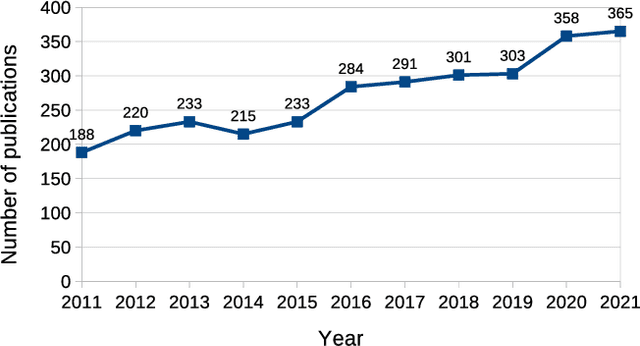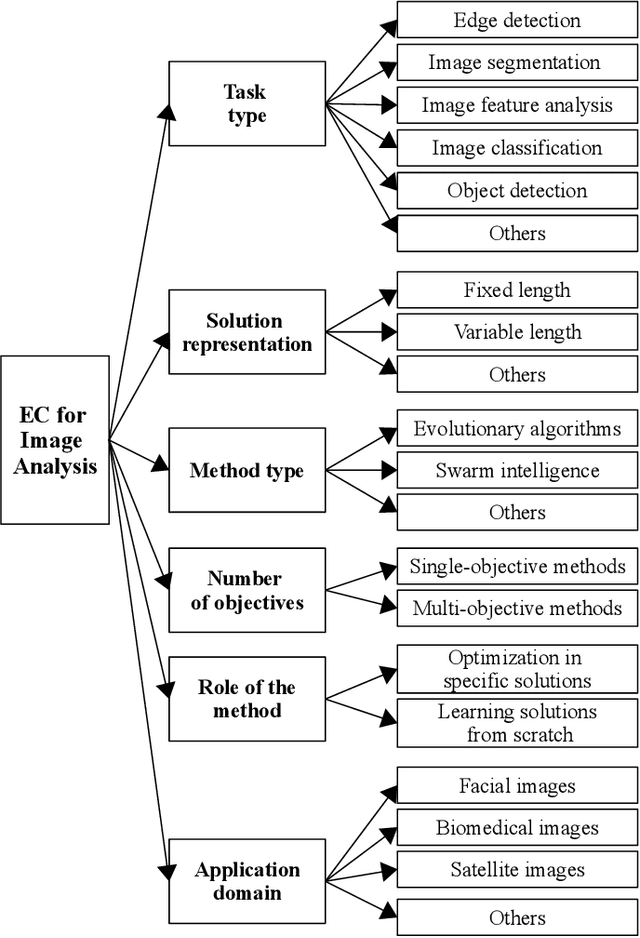Stefano Cagnoni
Dept. of Engineering and Architecture, University of Parma
Evolutionary Computation and Explainable AI: A Roadmap to Transparent Intelligent Systems
Jun 12, 2024



Abstract:AI methods are finding an increasing number of applications, but their often black-box nature has raised concerns about accountability and trust. The field of explainable artificial intelligence (XAI) has emerged in response to the need for human understanding of AI models. Evolutionary computation (EC), as a family of powerful optimization and learning tools, has significant potential to contribute to XAI. In this paper, we provide an introduction to XAI and review various techniques in current use for explaining machine learning (ML) models. We then focus on how EC can be used in XAI, and review some XAI approaches which incorporate EC techniques. Additionally, we discuss the application of XAI principles within EC itself, examining how these principles can shed some light on the behavior and outcomes of EC algorithms in general, on the (automatic) configuration of these algorithms, and on the underlying problem landscapes that these algorithms optimize. Finally, we discuss some open challenges in XAI and opportunities for future research in this field using EC. Our aim is to demonstrate that EC is well-suited for addressing current problems in explainability and to encourage further exploration of these methods to contribute to the development of more transparent and trustworthy ML models and EC algorithms.
Anomaly detection in laser-guided vehicles' batteries: a case study
Dec 27, 2022



Abstract:Detecting anomalous data within time series is a very relevant task in pattern recognition and machine learning, with many possible applications that range from disease prevention in medicine, e.g., detecting early alterations of the health status before it can clearly be defined as "illness" up to monitoring industrial plants. Regarding this latter application, detecting anomalies in an industrial plant's status firstly prevents serious damages that would require a long interruption of the production process. Secondly, it permits optimal scheduling of maintenance interventions by limiting them to urgent situations. At the same time, they typically follow a fixed prudential schedule according to which components are substituted well before the end of their expected lifetime. This paper describes a case study regarding the monitoring of the status of Laser-guided Vehicles (LGVs) batteries, on which we worked as our contribution to project SUPER (Supercomputing Unified Platform, Emilia Romagna) aimed at establishing and demonstrating a regional High-Performance Computing platform that is going to represent the main Italian supercomputing environment for both computing power and data volume.
A Survey on Evolutionary Computation for Computer Vision and Image Analysis: Past, Present, and Future Trends
Sep 14, 2022



Abstract:Computer vision (CV) is a big and important field in artificial intelligence covering a wide range of applications. Image analysis is a major task in CV aiming to extract, analyse and understand the visual content of images. However, image-related tasks are very challenging due to many factors, e.g., high variations across images, high dimensionality, domain expertise requirement, and image distortions. Evolutionary computation (EC) approaches have been widely used for image analysis with significant achievement. However, there is no comprehensive survey of existing EC approaches to image analysis. To fill this gap, this paper provides a comprehensive survey covering all essential EC approaches to important image analysis tasks including edge detection, image segmentation, image feature analysis, image classification, object detection, and others. This survey aims to provide a better understanding of evolutionary computer vision (ECV) by discussing the contributions of different approaches and exploring how and why EC is used for CV and image analysis. The applications, challenges, issues, and trends associated to this research field are also discussed and summarised to provide further guidelines and opportunities for future research.
* Conditionally accepted by IEEE Transactions on Evolutionary Computation
Genetic Algorithms for the Optimization of Diffusion Parameters in Content-Based Image Retrieval
Aug 19, 2019



Abstract:Several computer vision and artificial intelligence projects are nowadays exploiting the manifold data distribution using, e.g., the diffusion process. This approach has produced dramatic improvements on the final performance thanks to the application of such algorithms to the kNN graph. Unfortunately, this recent technique needs a manual configuration of several parameters, thus it is not straightforward to find the best configuration for each dataset. Moreover, the brute-force approach is computationally very demanding when used to optimally set the parameters of the diffusion approach. We propose to use genetic algorithms to find the optimal setting of all the diffusion parameters with respect to retrieval performance for each different dataset. Our approach is faster than others used as references (brute-force, random-search and PSO). A comparison with these methods has been made on three public image datasets: Oxford5k, Paris6k and Oxford105k.
 Add to Chrome
Add to Chrome Add to Firefox
Add to Firefox Add to Edge
Add to Edge